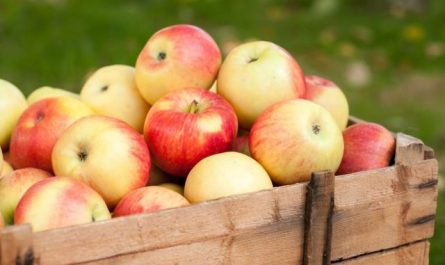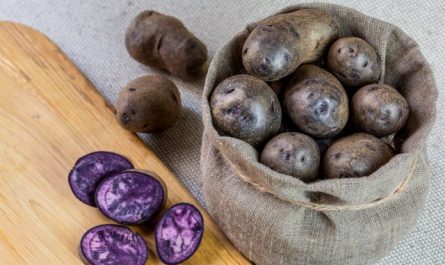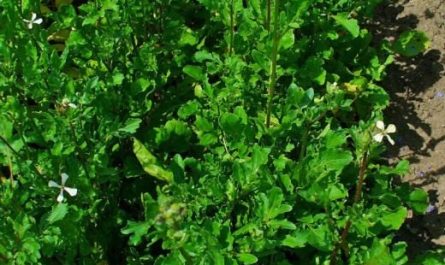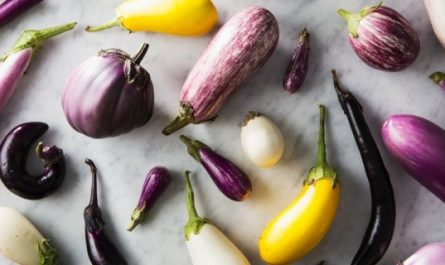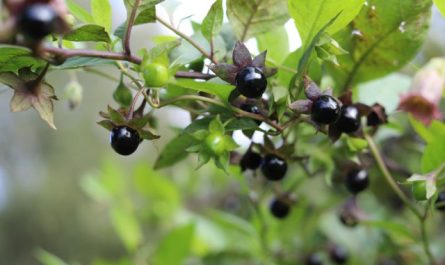Among the huge variety of garden and vegetable crops, exotics have become increasingly widespread in recent years. Some of them are really suitable for our conditions and give good harvests. Others are actively tested for strength, and some are still considered the latest innovations. One of such unusual offers on the market has recently become Melothria scabra. Most sources speak of it as a dwarf type of watermelon. But, in fact, this plant is a completely new crop for us and has no relation to any of the plants it resembles. Whether it is worth trying it in your beds is up to you to decide!

Where did the rough melotria come from?
It is not by chance that Melothria scabra is attributed to numerous varieties of watermelon. Its small berries, no more than 3 cm long and 2 cm wide, have a very similar color to it: blurred dark green stripes go on a light green background. If you pick the fruit and show it separately from the plant, then, indeed, it is a mini-watermelon! And Melothria grows in the form of a long liana, which is very reminiscent of watermelon lashes.
However, if you try the fruit to taste, many people think it resembles a sour cucumber. And in the longitudinal section there are two halves, like halves of a cucumber. And the smell is very similar. Only the white seeds look like watermelon seeds in shape.
Due to this similarity, this plant has many popular names: “Mexican miniature watermelon”, “mouse watermelon”, “Mexican sour cucumber”, “Mexican sour gherkin”, “African cucumber”, “hummingbird cucumber”, as well as “kukamelon”, “pepkin” and “mouse melon”.
Melothria scabra is native to Central America. There it grows as a fairly aggressive weed. Spreading along the ground and climbing onto supports, the herbaceous liana suppresses other crops. Due to the warm climate, it is perennial in its homeland and reproduces not only by seeds, but also by tubers.
Melothria scabra was brought to Europe quite recently – in 1987. It was mainly used as an exotic addition and decoration for restaurant dishes. In our country, thanks to the curiosity of gardeners, it has also proven itself as a wonderful addition to assorted pickles, mixed with cucumbers, tomatoes, and peppers.
Today, a number of varieties of Melothria scabra are offered for sale: “Baby”, “Mini-cucumber”, “Hummingbird”, “Shapito”. However, there are no particular differences between them.

Botanical description of the plant
Despite the fact that melodic melody (Melothria scabra) – it is neither a watermelon nor a cucumber, but it does have something in common with these crops – it belongs to the Pumpkin family. Melothria has a separate genus – Melothria, it includes about 166 species, most of which are not edible.
The liana has pubescent, triangular, three-segmented leaves with sharp ends of the segments. Both female and male flowers are formed on the plant. They are easy to distinguish: the former are located one by one, bloom earlier, the latter are collected in several, bloom later. The shape of the flowers is funnel-shaped. The color is yellow.
The vines grow quickly. They grow more than 3 meters per season. With the help of tendrils they easily climb up the tree.
The roots of the plant form fairly large tubers, weighing up to 400 g, similar to sweet potatoes. Thus, the yield from a bush is up to 6 kg of “cucumbers” and about 6 kg of tubers.
Peculiarities of growing
Recommendations for growing Melothria do not include any strict features. The culture is unpretentious. It loves the sun, although it can also tolerate partial shade. Like all pumpkins, it prefers well-developed fertilized soils. It needs regular watering and support.
When choosing a bed, it is good to give preference to one where supports will not interfere (shade neighboring plantings), and where pumpkins have not grown in the previous few seasons. The best predecessors, as with the entire pumpkin family, can be legumes, potatoes, garlic, early white cabbage, corn, cauliflower, parsley, onions. It is recommended to return the crop to its previous place no earlier than two years later.
In our conditions, Melotria scabra can be grown exclusively by seeds, since the tubers are difficult to preserve until spring. Sowing can be done directly on the bed (in a warm climate), or in cups to obtain seedlings. In the latter case, sowing is carried out in early April. In the first case, focusing on local conditions – the soil should warm up to +10 ° C.

Sowing for seedlings and in open ground
When sowing in a container, small melothria seeds can either be lightly pressed into the soil or sprinkled with a small layer of sifted soil and lightly compacted (for better adhesion to the substrate). Water (moisten the surface of the soil with a spray bottle) and place in a warm place with a temperature of about +24 °C.
After about 10 days, shoots will appear. After the seedlings form 2-3 true leaves, you can begin airing to harden the plants or move the pots to a cooler place with an air temperature of +18…+21 °C.
When the threat of return frosts has passed, the plants can be transplanted into open ground. The distance between them should be at least 50 cm. And it is good to immediately provide support. It is better not to let the melothria on the ground, since the bush must be well ventilated.
When sowing directly into a permanent place, it is important not to rush and wait for stable warmth. In the garden bed, the seeds will sprout a little longer, sometimes up to 2-3 weeks. Moreover, the warmer, the faster.
Care of Melothria scabra
The liana must be watered regularly, abundantly, at the root, without getting on the foliage. It is better with warm water. There is no need to pinch the vines.
Of the diseases in our conditions, melotria is most often susceptible to powdery mildew, but has a fairly high immunity to other diseases. For this reason, several preventive treatments against powdery mildew can be carried out during the season – with a solution of laundry soap, whey, cow dung infusion, or use phytosporin.

Harvesting and using fruits
Melothria fruits begin to appear several weeks after germination and, like all pumpkins, can become overripe. Therefore, they are collected regularly, not allowing the skin to harden. Seeds are collected from overripe fruits.
In addition to being used as food, Melothria scabra can also be used as an ornamental plant – planted in hanging pots, near a gazebo or fence. Its leaves do not turn yellow, thus maintaining its decorative qualities until the frosts.
Due to its size and taste, Melothria scabra is used in salads, replacing cucumbers, as a decoration for various dishes, and in “canning”. The sourness of its fruits is given by the skin, and the older the fruit, the more acid. However, due to their size, “mini-cucumbers” are not peeled, but they are collected early, before the seeds form. For canning, it is also better to use “young cucumbers”, since the thick skin of mature Melothria spoils the taste.
Unfortunately, the tubers of the crop are stored only in certain conditions – in damp peat in the basement, it is very difficult to save them until spring. In addition, over time they lose nutritional value. Therefore, they are usually eaten immediately after harvesting. Due to their sweet and juicy taste, salads are prepared from them.




